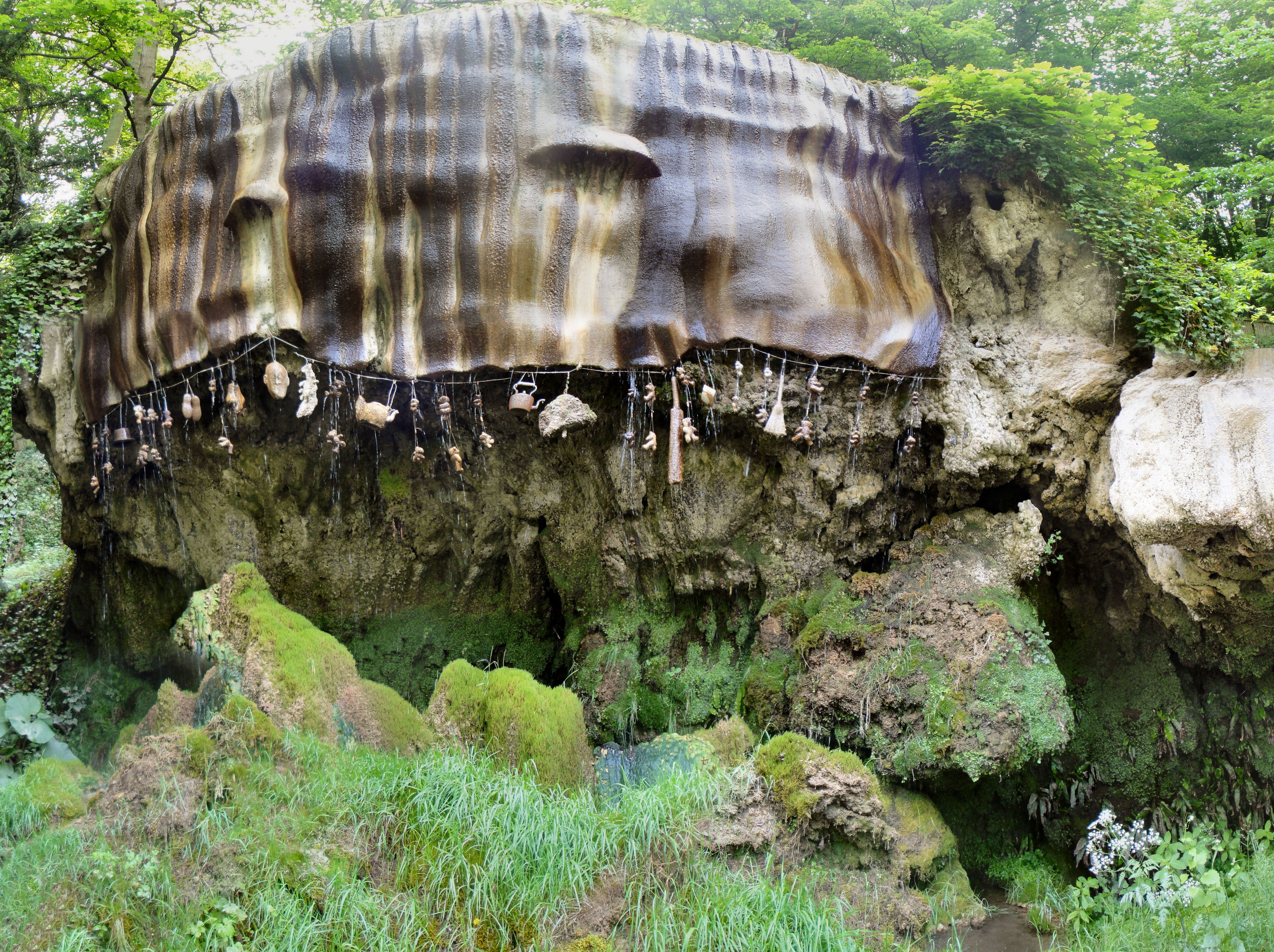Petrifying well on:
[Wikipedia]
[Google]
[Amazon]
A petrifying well is a
 Notable examples of petrifying wells in
Notable examples of petrifying wells in
Mother Shipton's Cave & the Petrifying Well
Water wells Witchcraft in England English folklore
well
A well is an excavation or structure created on the earth by digging, driving, or drilling to access liquid resources, usually water. The oldest and most common kind of well is a water well, to access groundwater in underground aquifers. The ...
or other body of water which gives objects a stone
In geology, rock (or stone) is any naturally occurring solid mass or aggregate of minerals or mineraloid matter. It is categorized by the minerals included, its Chemical compound, chemical composition, and the way in which it is formed. Rocks ...
-like appearance. If an object is placed into such a well
A well is an excavation or structure created on the earth by digging, driving, or drilling to access liquid resources, usually water. The oldest and most common kind of well is a water well, to access groundwater in underground aquifers. The ...
and left there for a period of months or years, the object acquires a stony exterior.
Nature
If an object is placed into such a well and left there for a period of weeks or months the object acquires a stony exterior. At one time this property was believed to be a result of magic orwitchcraft
Witchcraft is the use of Magic (supernatural), magic by a person called a witch. Traditionally, "witchcraft" means the use of magic to inflict supernatural harm or misfortune on others, and this remains the most common and widespread meanin ...
, but it is an entirely natural phenomenon and due to a process of evaporation and deposition in waters with an unusually high mineral
In geology and mineralogy, a mineral or mineral species is, broadly speaking, a solid substance with a fairly well-defined chemical composition and a specific crystal structure that occurs naturally in pure form.John P. Rafferty, ed. (2011): Mi ...
content.
This process of petrifying is not to be confused with petrification, wherein the constituent molecules of the original object are replaced (and not merely overlaid) with molecules of stone or mineral.
Examples
 Notable examples of petrifying wells in
Notable examples of petrifying wells in England
England is a Countries of the United Kingdom, country that is part of the United Kingdom. It is located on the island of Great Britain, of which it covers about 62%, and List of islands of England, more than 100 smaller adjacent islands. It ...
are the spring at Mother Shipton's Cave in Knaresborough
Knaresborough ( ) is a market and spa town and civil parish on the River Nidd in North Yorkshire, England. It is east of Harrogate and was in the Borough of Harrogate until April 2023.
History
The Knaresborough Hoard, the largest hoard of ...
and Matlock Bath
Matlock Bath is a village and civil parish in Derbyshire, England. It lies in the Derbyshire Dales, south of Matlock on the main A6 road, and approximately halfway between Buxton and Derby. The population of the civil parish at the 2011 census ...
, in Derbyshire
Derbyshire ( ) is a ceremonial county in the East Midlands of England. It borders Greater Manchester, West Yorkshire, and South Yorkshire to the north, Nottinghamshire to the east, Leicestershire to the south-east, Staffordshire to the south a ...
. In France
France, officially the French Republic, is a country located primarily in Western Europe. Overseas France, Its overseas regions and territories include French Guiana in South America, Saint Pierre and Miquelon in the Atlantic Ocean#North Atlan ...
, some of the most well-known wells, such as the "petrifying fountains" of St. Alyre (Clermont-Ferrand
Clermont-Ferrand (, , ; or simply ; ) is a city and Communes of France, commune of France, in the Auvergne-Rhône-Alpes regions of France, region, with a population of 147,284 (2020). Its metropolitan area () had 504,157 inhabitants at the 2018 ...
) and Saint-Nectaire, are found in the department of Puy-de-Dome. In Ireland, such wells were noted by John Rutty on Howth Head
Howth Head ( ; ''Ceann Bhinn Éadair'' in Irish) is a peninsula northeast of the city of Dublin in Ireland, within the governance of Fingal County Council. Entry to the headland is at Sutton while the village of Howth and the harbour are on t ...
,Rutty, John (1757). ''A Methodical Synopsis of Mineral Waters, comprehending the most celebrated medicinal waters, both cold and hot, of Great-Britain, Ireland, France, Germany, and Italy, and several other parts of the world'', London: William Johnston; p. 351 among other locations.
See also
*Speleothem
A speleothem (; ) is a geological formation made by mineral deposits that accumulate over time in natural caves. Speleothems most commonly form in calcareous caves due to carbonate dissolution reactions. They can take a variety of forms, depen ...
**Stalactite
A stalactite (, ; , ) is a mineral formation that hangs from the ceiling of caves, hot springs, or man-made structures such as bridges and mines. Any material that is soluble and that can be deposited as a colloid, or is in suspension (chemistry ...
**Stalagmite
A stalagmite (, ; ; )
is a type of rock formation that rises from the floor of a cave due to the accumulation of material deposited on the floor from ceiling drippings. Stalagmites are typically composed of calcium carbonate, but may consist ...
References
{{ReflistExternal links
Mother Shipton's Cave & the Petrifying Well
Water wells Witchcraft in England English folklore